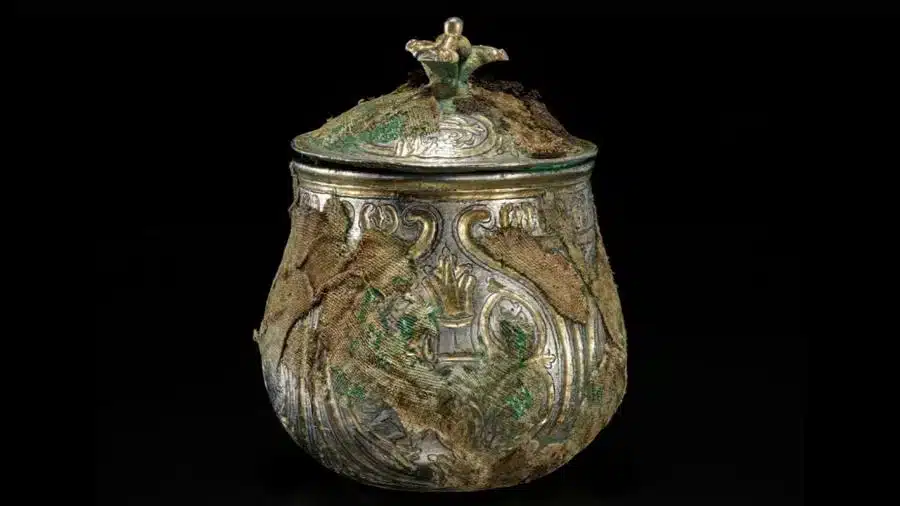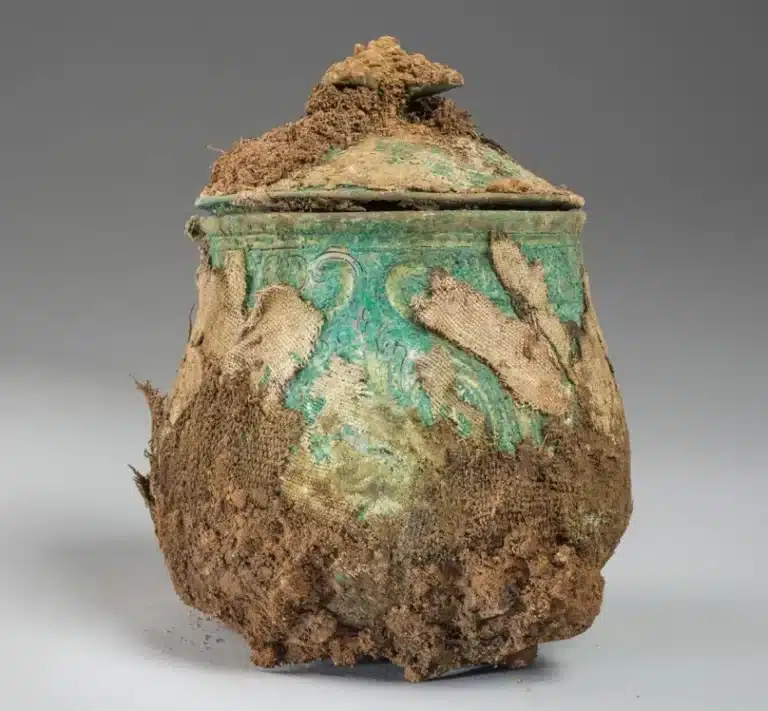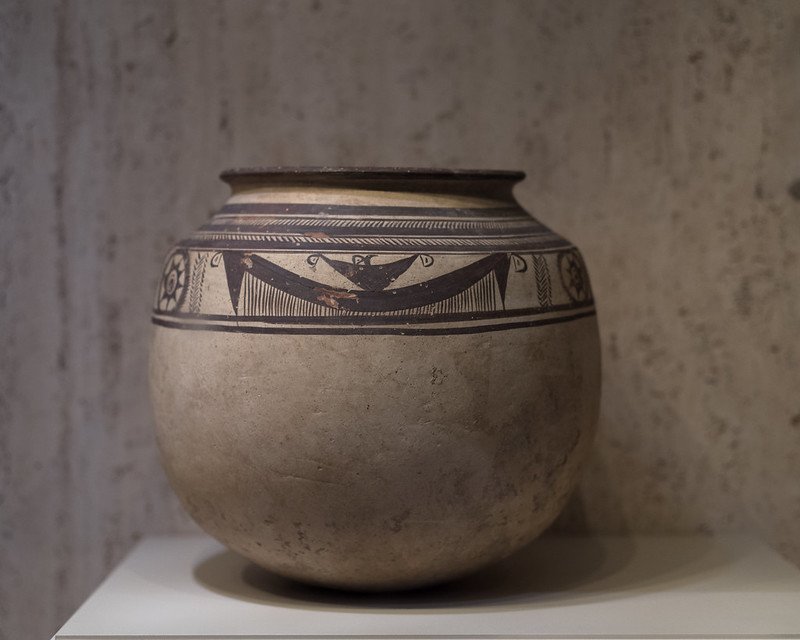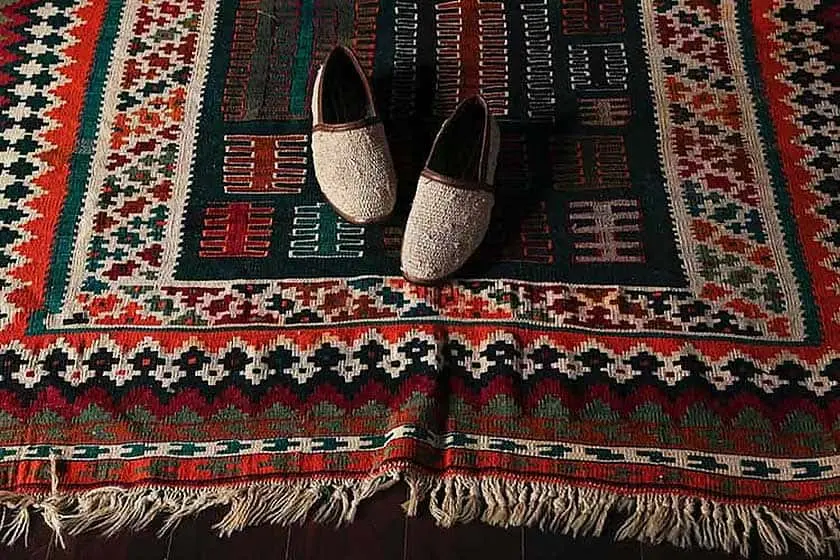A Shining Legacy
The story of silver in Persia is an ancient and luminous one, its gleam woven into the very fabric of the land’s history and artistry. The very word for silver, derived from the Sogdian “nekrtek,” speaks to the deep-rooted connections between Persia and the broader regions of Central Asia. Known as “asim” in Pahlavi, the language of ancient Persia, it has been prized for millennia, and its captivating beauty and malleability have inspired civilizations across time.
Ancient Origins and Archaeological Discoveries:
Archaeological evidence reveals that silver production in Persia dates back to the fourth and fifth millennia BC, coinciding with the dawn of metalworking in the region. Settlements like Sialk, near Kashan, have yielded artifacts dating back five thousand years, demonstrating this precious metal’s early adoption and appreciation. The discovery and utilization were likely intertwined with the mining of other metals like lead and zinc, which share geological origins and were also harnessed by early Iranians.
Iran’s silver mines, primarily concentrated in regions like Azerbaijan, Isfahan, Semnan, Kerman, and Khorasan, have consistently supplied this precious metal throughout history. The Nakhlek mine in Anarak, Isfahan, for instance, was a significant source in ancient times, particularly during the Sasanian period, when it fueled the creation of exquisite silver vessels.
Archaeological excavations have unearthed remarkable silver objects that offer glimpses into Persia’s rich and layered past. Among these are the renowned cups:
Marvdasht Cup:
Dating back to the Elamite period (circa 2000 BC), this cup stands as a testament to the early mastery of silverwork in Persia. Its intricate designs and craftsmanship speak to a sophisticated understanding of metalworking techniques.
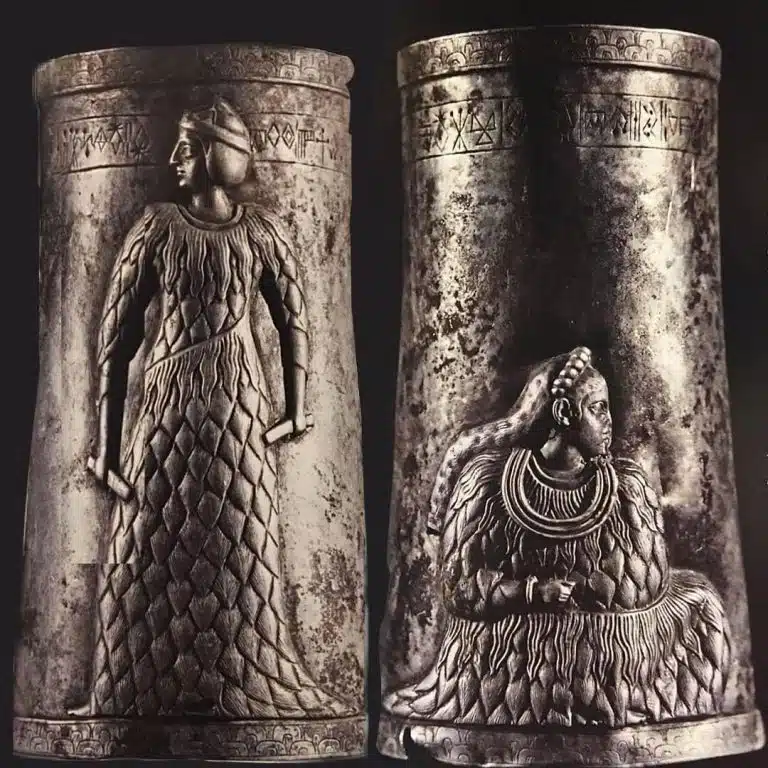
Khalkhal Cup:
From the Mannani period (1000-700 BC), this cup reflects the artistic traditions of northwestern Iran, showcasing regional variations in style and motifs.

Amalesh Cup:
Originating around 1500 BC, this cup highlights the enduring appeal of silver in Persian craftsmanship, its form and decoration reflecting the aesthetic sensibilities of the time.
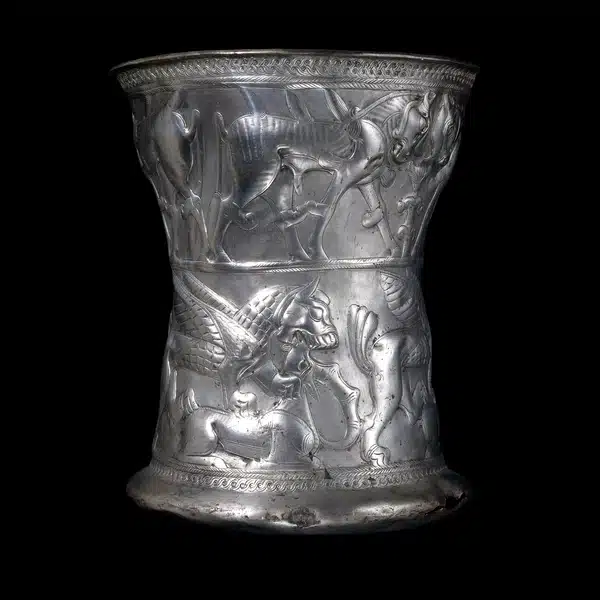
Silver in the Rise and Fall of Empires:
The Achaemenid Empire (c. 550-330 BC), with its expansive trade networks stretching across vast territories, further solidified the importance of silver in Persian society. It was not merely a precious metal but a currency that facilitated trade and commerce throughout the empire. The iconic siglos coins, bearing the image of the Persian king, became a symbol of Achaemenid power and economic influence. The Achaemenid kings amassed grand treasuries filled with silver, a testament to their wealth and the empire’s prosperity.
The Sasanian Empire (224-651 AD) inherited and expanded upon this rich tradition of silverwork. Sasanian silversmiths were renowned for their exceptional skill in depicting intricate scenes on plates and vessels. Hunting scenes, courtly life, and mythical creatures were brought to life in silver, showcasing the empire’s artistic achievements and cultural sophistication. These objects often served as prestigious diplomatic gifts, exchanged with rulers of other empires, demonstrating the artistic prowess of Persia.
The Enduring Allure of Persian Silverwork:
Persian artisans have long been celebrated for their mastery of silverwork, transforming this precious metal into objects of both breathtaking beauty and practical function. Their skills were evident in a wide range of creations:
- Jewelry: Elaborate necklaces, earrings, and bracelets, often adorned with precious stones and intricate filigree work, were not only symbols of status and wealth but also expressions of personal style and artistry.
- Vessels: Silver bowls, plates, and ewers, meticulously engraved and decorated with repoussé work, graced the tables of the elite, adding a touch of luxury and refinement to their daily lives.
- Ceremonial Objects: Silver played a vital role in religious ceremonies, with ornate incense burners, ritual vessels, and decorative elements used in temples and Zoroastrian fire altars, adding a sense of sacredness and splendour to religious practices.
Even after the Islamic conquests in the 7th century AD, silver remained deeply ingrained in Persian culture. Islamic artisans seamlessly integrated silver into their artistic repertoire, incorporating it into mosque decorations, calligraphy tools, and scientific instruments like astrolabes. The Safavid era (1501-1736) witnessed a resurgence of silverwork, with the city of Isfahan becoming a renowned center for the craft. Safavid silversmiths produced exquisite objects that blended Persian traditions with new influences, further enriching the artistic landscape.
A Living Legacy:
Today, the legacy of silver in Persia continues to shine brightly. Skilled artisans, carrying on the traditions passed down through generations, create breathtaking silver jewelry, decorative objects, and tableware, ensuring that the centuries-old techniques remain alive. These contemporary creations, while embracing modern influences and catering to contemporary tastes, still carry the echoes of the rich history and artistic heritage that have made Persian silver renowned throughout the world. We are proud to share this heritage with you through our collection of exceptional Persian silver art. Discover an array of unique and beautiful silver accessories in our online store, and find the perfect piece to complement your style or add a touch of Persian elegance to your home.
